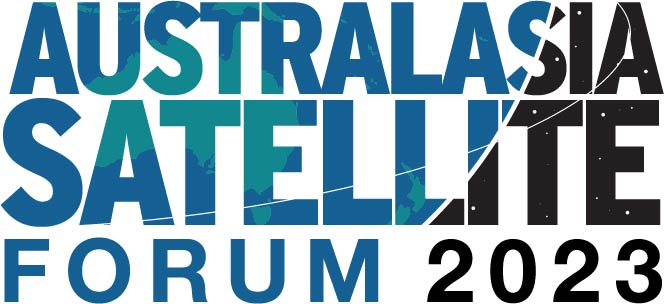|
EchoStar to build a global 5G
IoT satellite network based in Australia
US-based global satellite provider
EchoStar Corporation has signed a deal with smallsat
manufacturer Astro Digital to build the satellites for a
global S-band mobile satel[1]lite
service network, operated by its Australian subsidiary
EchoStar Global.
The 28 satellite constellation,
delivering services by the start of 2024, will provide
global 5G-based IoT, machine-to-machine and other data
services.
Echostar, with revenues around US$2
billion, provides satellite communications and internet
services through its Hughes Network Systems and EchoStar
Satellite Ser[1]vices
businesses globally. Through its subsidiary EchoStar
Mobile, EchoStar already operates an MSS network in
Europe using its geostationary EchoStar XXI satellite,
which the company said will “interoperate seamlessly”
with the new Australian[1]based
LEO constellation. The company also plans to launch its
much delayed EchoStar XXIV satellite, also known as
JUPITER 3, in the ϐirst half of this year. JUPITER 3
will deliver more than 500Gbps of highthroughput
satellite capacity, doubling the size of the Hughes’
JUPITER ϐleet over North and South America.
“This [Astro] agreement represents
another step forward towards our goal of a global
non-terrestrial 5G network,” said EchoS[1]tar
CEO Hamid Akhavan.
“With our engineering ingenuity,
our service delivery expertise and our spectrum rights,
EchoStar is uniquely positioned to offer worldwide
S-band satellite services to help meet the insatiable
demand for complete and constant connectivity.”
"These new capabilities will ϐill a
gap in the connected ecosystem, greatly expand[1]ing
worldwide IoT interoperability," said Melbourne-based
EchoStar Global Australia managing director Josh
Williams. “Our team, together with Astro Digital, has
already begun integration of our Australian-based
operations to bring to market a truly global solution
with consistent and reliable network performance.”
WHY AUSTRALIA? EchoStar’s
Australian connection began in 2019 when its subsidi[1]ary,
EchoStar Global acquired Vancouver-headquartered
satellite IoT company Helios Wire Corporation. The
acquisition included Helios’s Australian subsidiaries
Sirion Global and Sirion Holdings. Sirion Global held
global spectrum rights for S-band MSS, administered by
Australia through the Australian Communications and
Media Au[1]thority,
and has been working to develop solutions for
high-volume asset tracking and monitoring applications
by satellite.
At the time of the sale, Helios
co-founder Peter Ruderman thanked ACMA for many years of
support, demonstrated by the number of times the
regulator took on the ITU’s radiocommunications body
(ITU-R) to defend Sirion’s spectrum – it had gained the
rights to 30MHz of S-band spectrum in 2013 originally
allocated to failed medium
-earth orbit satellite venture ICO Global Communications
– against objections from regulatory authorities
including the UK and Papua New Guinea. Satellite
spectrum is given to national authorities rather than
individual companies, and ACMA ϐirst regis[1]tered
Sirion's ϐiling with the ITU back in 2004.
ACMA conϐirmed to CommsDay that
EchoStar Global Australia has been granted exclusive
rights to design a satellite system that is capable of
operating “in accordance with the ITU SIRION-1 satellite
ϐiling”. The ϐiling includes what is known as the 2GHz
MSS band (1980-2010/2170-2200MHz) amongst other
frequency bands. How[1]ever
the spokesperson added that the ϐiling doesn’t give the
company the right to op[1]erate
a satellite in Australia – and indeed in most if not all
countries – so it would still need to apply for a
radiocommunications licence. “Echostar does not have a
licence to operate in the 2GHz MSS band in Australia,”
said the ACMA spokesperson. “Work on the allocation of
MSS licences in 1980-–2005 and 2170–2195MHz is not
anticipated to commence until after the 3400–3575MHz and
3700–3800MHz auction.”
Sirion Global in the past lobbied
ACMA, saying that 2GHz was the cornerstone of its
planned service. Sirion was seeking a single licence
allocation of the entire band, Aus[1]tralia-wide
for MSS with a terrestrial component.
CONSTELLATION DETAILS: Echostar’s
strategy is to integrate its products and services into
new global, hybrid networks that leverage multiple
satellites and terrestrial technologies. The 28
satellites in this constellation design will feature an
advanced software-deϐined radio with onboard storage and
processing to power smart two[1]way
device connectivity. The satellites will be enabled with
the LoRa protocol for con[1]necting
very low-cost, long-lived devices. With support for 5G
non-terrestrial net[1]work
(NTN) services, the constellation will serve as a
foundation for EchoStar to engi[1]neer
5G-based NTN capabilities according to 3GPP release 17
speciϐications. The Lo[1]Ra
capability enables seamless integration with terrestrial
LoRa deployments, elimi[1]nating
the need for LoRaWAN roaming.
According to satco Skybrokers,
Sirion’s original constellation comprised 6U Cu[1]beSats
constructed by Tyvak Nano-Satellite Systems and be
licensed to provide MSS on S-band frequencies at the
2,000–2,020MHz uplink and 2,180–2,200MHz downlink.
The initial operations consisted of
the EG-1 satellite, which was successfully launched in
August 2020 and EG-3, launched in June 2021.
Additionally, EchoStar Global ac[1]quired
ownership of Sirion Pathϐinder 2 or Helios Wire
Pathϐinder 2, a 6U CubeSat built as a demonstrator for
Sirion Global’s S-band IoT. Pathϐinder 2 was launched in
December 2018, for operations under the SIRION-1 ITU
ϐilings.
While it is not yet clear where
Echostar Global will build its ground facilities, Sirion
Global did hold a short-term earth receive licence and a
ϐixed earth licence in Dubbo.
O3b mPOWER’s new ground station –
one of two in Australia – is also in Dubbo and is
operated by Pivotel.
Echostar’s partner Astro Digital
originally provided high resolution multi-spectral
images of the arable and populated land on Earth.
Headquartered in Santa Clara, the company refocused to
manufacture satellites in its California factory and
said it now provides a follow-the-sun satellite
operations model “from both the US and Australia.”
Simon Dux, Commsday

13 & 14 June 2023
Fullerton Hotel
Sydney
|